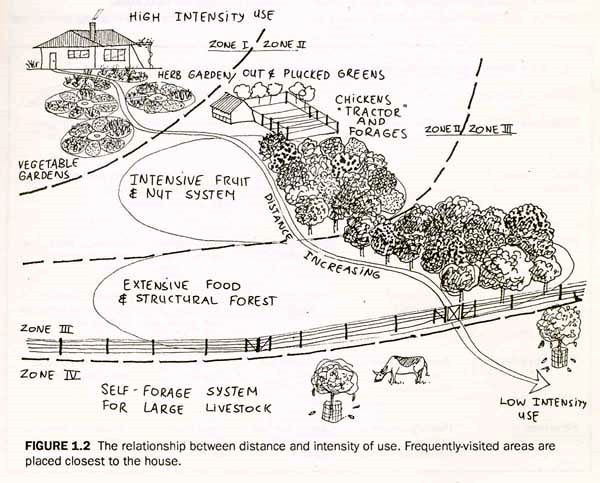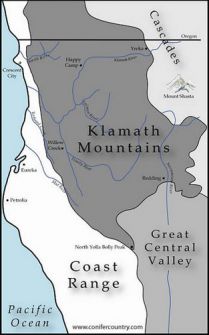What is Permaculture?
By Steve Diver, excerpted with permission:
Permaculture is about designing ecological human habitats and food production systems. It is a land use and community building movement which strives for the harmonious integration of human dwellings, microclimate, annual and perennial plants, animals, soils, and water into stable, productive communities. The focus is not on these elements themselves, but rather on the relationships created among them by the way we place them in the landscape. This synergy is further enhanced by mimicking patterns found in nature. A central theme in Permaculture is the design of ecological landscapes that produce food. Emphasis is placed on multi-use plants, cultural practices such as sheet mulching and trellising, and the integration of animals to recycle nutrients and graze weeds.

However, Permaculture entails much more than just food production. Energy-efficient buildings, waste water treatment, recycling, and land stewardship in general are other important components of Permaculture. More recently, Permaculture has expanded its purview to include economic and social structures that support the evolution and development of more permanent communities, such as co-housing projects and eco-villages. As such, Permaculture design concepts are applicable to urban as well as rural settings, and are appropriate for single households as well as whole farms and villages. "Integrated farming" and "ecological engineering" are terms sometimes used to describe perma-culture, with "cultivated ecology" perhaps coming the closest.
The Practical Application of Permaculture
Permaculture is not limited to plant and animal agriculture, but also includes community planning and development, use of appropriate technologies (coupled with an adjustment of life-style), and adoption of concepts and philosophies that are both earth-based and people-centered, such as bioregionalism.
Many of the appropriate technologies advocated by permaculturists are well known. Among these are solar and wind power, composting toilets, solar greenhouses, energy efficient housing, and solar food cooking and drying.
Since Permaculture is not a production system, per se, but rather a land use and community planning philosophy, it is not limited to a specific method of production. Furthermore, as Permaculture principles may be adapted to farms or villages worldwide, it is site specific and therefore amenable to locally adapted techniques of production.

